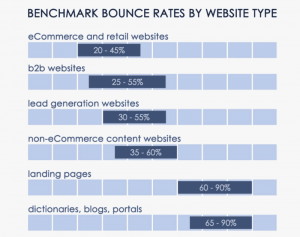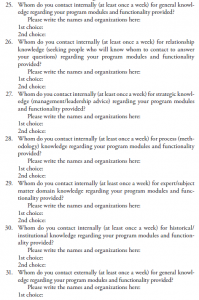
When you’re a solopreneur, you need to recognize and take advantage of those times when you naturally feel energized and creative. For some, it’s January 1, the start of a new calendar year.
To those people I say, New Year, schmoo year. The time when I feel like starting fresh is always back-to-school time. There’s something about the challenge of a new schedule, new faces, and activities that are a bit more advanced that really gets my juices flowing, and I find myself churning out new ideas.
Nora Ephron captured it perfectly in the movie, You’ve Got Mail:
Don’t you love New York in the fall? It makes me want to buy school supplies. I would send you a bouquet of newly sharpened pencils if I knew your name and address.
The whole New Year thing has never really worked for me, so I don’t fight it any more. Since fall is when the mood strikes, that’s when I make plans to start something fresh, or revitalize something I’m currently doing in my business.
Whenever you find your own start/restart time, follow this outline to kick your business up a notch.
Evaluate the previous year

It’s difficult to move ahead if you don’t have a clear picture of where you are and where you’ve been. What you evaluate will depend on your business, but there are some items common to most solopreneurs.
Income and Expenses
First, look at where your revenue came from. Was it services provided? Products sold? Advertising? Affiliate links?
If you have more than one income stream, which one performed the best for you? How much time did you invest to generate that income?
Now look at expenses. Are they in line, as a percentage, with your financial goals? Are there places you can cut or reduce expenses to be more profitable? Are there areas where you can increase expenditure to become more efficient and use your time more productively?
Customer Feedback
What kinds of feedback did your business receive during the past year? Customers can give you information that’s very helpful (even if it is disguised sometimes as complaints or criticism), so take time to review and identify trends.
How Did You Spend Your Time?
Review how you spent your time. Did you spend the majority of your time on activities that produced the majority of your income? If you’re like most of us, you probably didn’t. The 80-20 rule says you probably spent about 20% of your time on things that produced 80% of your income.
Figure out what your time is really worth — not just what you bill clients if you’re a service provider, but in total. Take your average monthly income and divide it by the hours you spent doing business tasks. Include everything — going to the bank, picking up paper and printer cartridges at Office Depot, phone calls, cleaning your office… everything.
That number is what your time is worth. If that figure is a little depressing, cheer up — there are ways to improve it.
Marketplace Trends
What’s trending in your niche? Is it different from what was popular a year ago? Do you provide a service or a product that was in high demand but is now on the wane? Is there something new your customers are looking for?
How Was Your Self-Care?
Yes, this is a business question you should address. If you don’t take care of yourself, if you run yourself ragged keeping up with all the demands on your time, your business will suffer. (So will your family and friends, but that’s a topic for another day.)
If you’re chained to your desk 16 hours a day, six or seven days a week, if you don’t have time to exercise, eat properly, or get a quality night’s sleep, you’re following an unsustainable path. As solopreneurs, there will always be times when we have to put in extra effort and push ourselves hard. For your business to succeed long-term, though, those times should be the exception and not the rule.
Once you have a good sense of where your business is now, you can look ahead.
Next, Maximize Where You’re At
In this step, we’re going for the low-hanging fruit. This stage won’t involve big changes, but tweaks to what’s already working for you.
Profitability
Being profitable is a simple equation: earn more than you spend. To become more profitable, you can bring in more revenue, or spend less.
Sometimes, though, the solution is counterintuitive. There may be areas where you can improve profitability by spending more. Here are some examples:
- You spend 10 hours per month on administrative chores like bookkeeping and tax preparation. You figured out in the step above that your time is worth $ 37/hour, but you bill clients at a rate of $ 100/hour. Those 10 hours you spend on administration “cost” you $ 630. If you could hire someone for $ 200/month to handle those tasks, you’d have 10 more hours available to earn at $ 100/hour, giving you a really good rate of return on that investment.
- Every week you write a blog post for your website. It takes you 2-3 hours to write the post, then you spend another 2 hours creating four images to use on the post and in social media. Paying someone on Fiverr.com $ 10 per image earns you $ 160 worth of time!
- Every month you spend 3 hours fixing problems on your WordPress site, and tweaking it to make it run faster. Moving off your $ 6/month shared hosting service onto a $ 30/month managed hosting account frees up that time, giving you back about $ 200 worth of time to spend in income generation.
You get the idea…
If you’re just starting out and bootstrapping every aspect of your solopreneur business, you may not have the resources, but after a couple of years these sorts of expenses will more than pay for themselves.
Look for places to cut expenses as well — just make sure the cuts don’t end up costing more of your time.
Use Customer Feedback
 It’s tempting, when customers or clients are critical, to dismiss them as being whiners. If customers uniformly commend your offerings and your service, and one stinker gives you a hard time, he probably is just a complainer.
It’s tempting, when customers or clients are critical, to dismiss them as being whiners. If customers uniformly commend your offerings and your service, and one stinker gives you a hard time, he probably is just a complainer.
However, if several customers bring up the same issue, pay attention. Think about what you can do to alleviate their concerns. Sometimes there’s a real problem with a substandard product, but often it’s as simple as managing expectations up front.
Keep in mind that it’s always cheaper to keep an existing customer than to find a new one!
For example, I offer a service I call the “Bargain Basement” WordPress installation. It’s a very low-cost way for customers to get a basic, bare-bones WordPress site set up, without any fancy bells and whistles. When I first offered this service, the client would come back wanting me to add this, tweak that, and change the way the theme handled something or other, without any additional payment. And because I wanted them to be happy with their sites and my services, I often made those changes, sometimes spending many hours on them.
Nowadays, I state clearly that the Bargain Basement option will not provide the customer with a finished, turnkey website. I specify the number of menus, widgets and plugins I’ll install, and inform them they will have to add content themselves. If someone wants me to do more, they choose a more inclusive package.
Clients are happier because their expectations are realistic from the start, and I feel less compelled to add extra services I’m not being paid for.
Another common complaint is that there’s not enough communication between you and the customers. One solution is to prepare templates for a series of emails that you send as the project progresses, to keep the customer informed. Personalizing a template takes just a few minutes, as opposed to writing an entire email from scratch. If you’re selling a product rather than a service, the emails can be completely automated.
Those are just two common scenarios.
Now think about the questions customers frequently ask. Could you create a new product, or offer a new service, to address them?
Put positive feedback to good use. If a customer says something nice, ask if you can use it in a testimonial. Then include it on your website or in your marketing materials going forward.
Allocate Your Time Wisely
We’ve already touched on this, but the more time you can spend on tasks that bring in the majority of your income, the better off you’ll be.
As a solopreneur, I know how tempting it is to do everything myself. The thought of paying someone to do something I can do for myself is downright painful, but there are times when it’s the best thing you can do for yourself and for your business.
A few years ago I finally broke down and started paying an accountant to handle my annual tax preparation. Not only did I save precious time, I also avoided a whole lot of stress. Yes, I’m perfectly capable of preparing my own tax return, even when it includes a Schedule C and other business-related forms. But my time is better spent on client projects or writing.
The closer you can stick to activities that are central to your business, and the more you can outsource other tasks, the more potential you have for profitability.
Take Care of Yourself

I’ll be the first to admit I’m pretty terrible at this. I’ve noticed a correlation, though, one that shouldn’t be surprising — when I exercise regularly, eat a healthful diet, and get enough rest, I’m more creative and happier. The quality of my work goes up, and I actually get more done in less time.
There seems to be a trend today, to wear busy-ness and lack of sleep as a badge of honor. Don’t fall into that trap. To reduce stress and be less busy:
- Find ways to be more productive in the time you have — here’s an article to start you out.
- Map out some “you” time every day. Every. Single. Day. Use it to exercise, get a massage, play with your dog, read something unrelated to your business, play an instrument, or something else that nourishes and revitalizes you.
- Take time for eating a healthy meal, away from your desk.
- Sleep well. It starts at least an hour before bedtime when you remove your eyeballs from the screen — every screen. For an hour before bed, don’t watch TV or look at your computer, tablet or phone screen because they affect your brain in ways that discourage sleep, according to quite a few studies — here’s some advice from The Sleep Foundation. The one exception would be an e-ink device like the Kindle (not the Kindle Fire, which is essentially a tablet, but the plain-vanilla reader).
You’ll find that when you take better care of yourself, you’ll be more productive.
Plan Something New
After you’ve strategized how to make the most of what you already have, think about ways to move your business forward.
- Offer a new product or service
- Create a course
- Expand your content into a new medium to get it in front of a new group of customers
- Update your branding and marketing
- Try a new type of social media campaign
The possibilities are endless, depending only on your knowledge of your market and your creativity.
I would send you a bouquet of newly sharpened pencils. . .
Business & Finance Articles on Business 2 Community(75)
Report Post







